When we moved to our new house quite some years ago, the former residents left an old oak table. It was very outdated, and above all, very heavy. So heavy in fact, that the movers used a lift to get it downstairs into the workshop. I proceeded to cut it in half and had one half split on a large bandsaw at Molen de Salamander.
For many years the slab stood waiting for a project. Until now. In this post I will not focus much on the actual building of the bench, but a bit more on how I got to the end. I didn’t have a design of what wanted to make, so I improvised a lot during the construction.
The general idea was that the bench should be long enough for 2/3 people to sit on, and narrow enough to fit in a narrow hallway. My first idea was to have 2 ends made of the same board. After taking measurements it turned out that the slab was to short for that. Even one end from the slab was not really doable, but luckily it was quite wide.
I cut the length of the board to the desired size. From the side I removed a piece of about 10cm wide. This side-piece was then cut in three equal parts and glued together. This would then form one end piece. Of course, the joint couldn’t be too simple, so I made a nice dovetail.
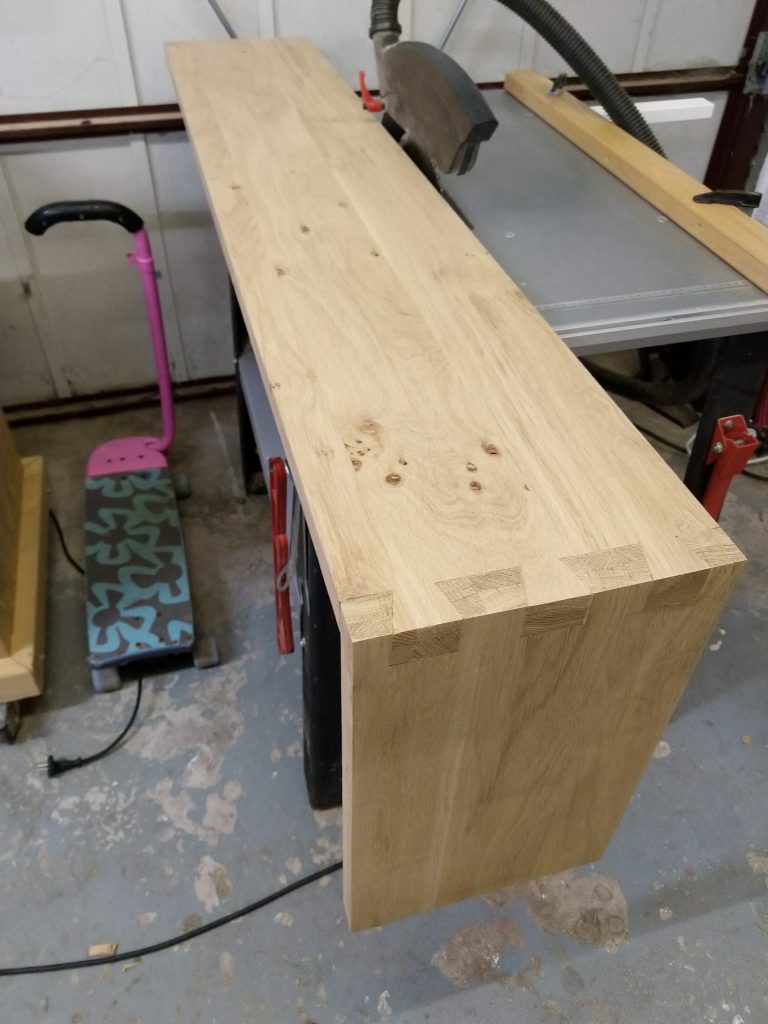
The other side needed a leg as well. I had some steel beams left from the supply I used for the salontafel, so I started going over the options. I quickly settled on a rectangular shape. Luckily enough, the thickness of the beams is just about the same of the thickness of the oak slab, which gives a balanced look. I did not want the connection between the steel side and the seat to be visible, so I welded two pieces on top which I could bolt down. A nice side effect is that the seat seems to float on the leg.
For a perfect finish I took the leg to a local powder coating workshop. The result is amazing, and well worth the money (only about 30,-). A finish like this is really difficult to get by using paint.
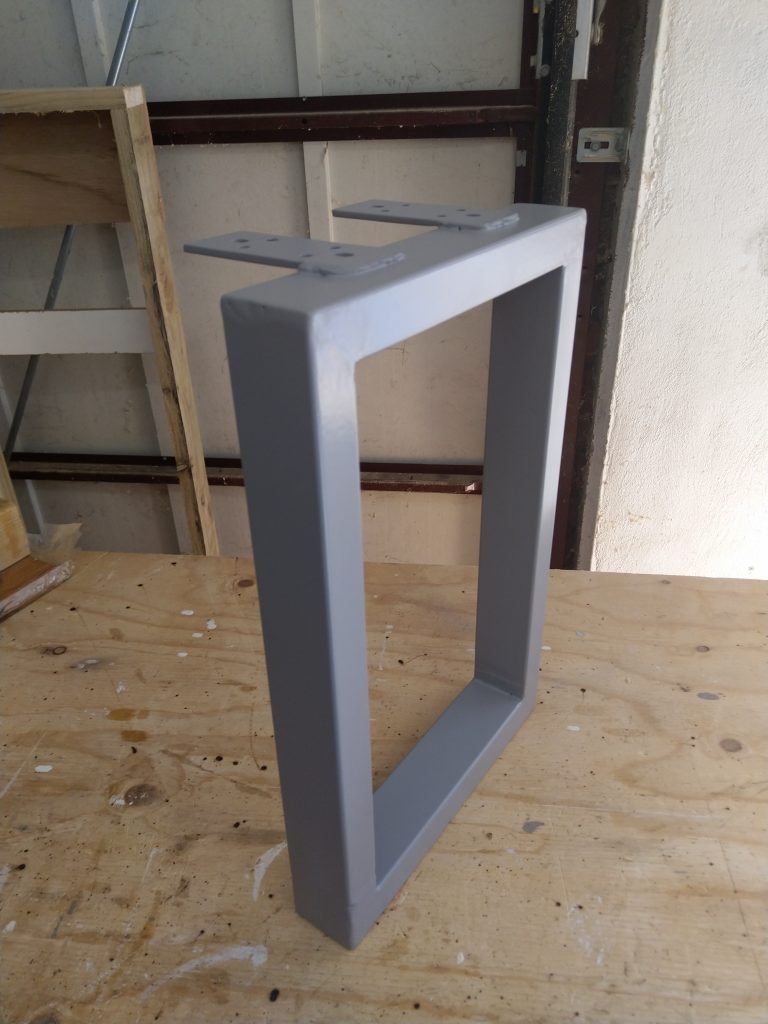
While the leg was at the paint shop I continued working on the oak part. I liked the bench to be light, but wanted the grain of the wood to be visible. Real white paint was therefore not an option. Instead I used whitewash/chalk paint, which I rubbed in. It really lightens up the wood, but it doesn’t cover up the structure. The dovetail did not really stand out as much as I hoped however. To put emphasis on this detail I found an “Oriental Red” paint in the local DIY-shop. I painted the end grain parts of the wood red. This really highlights the dovetail.
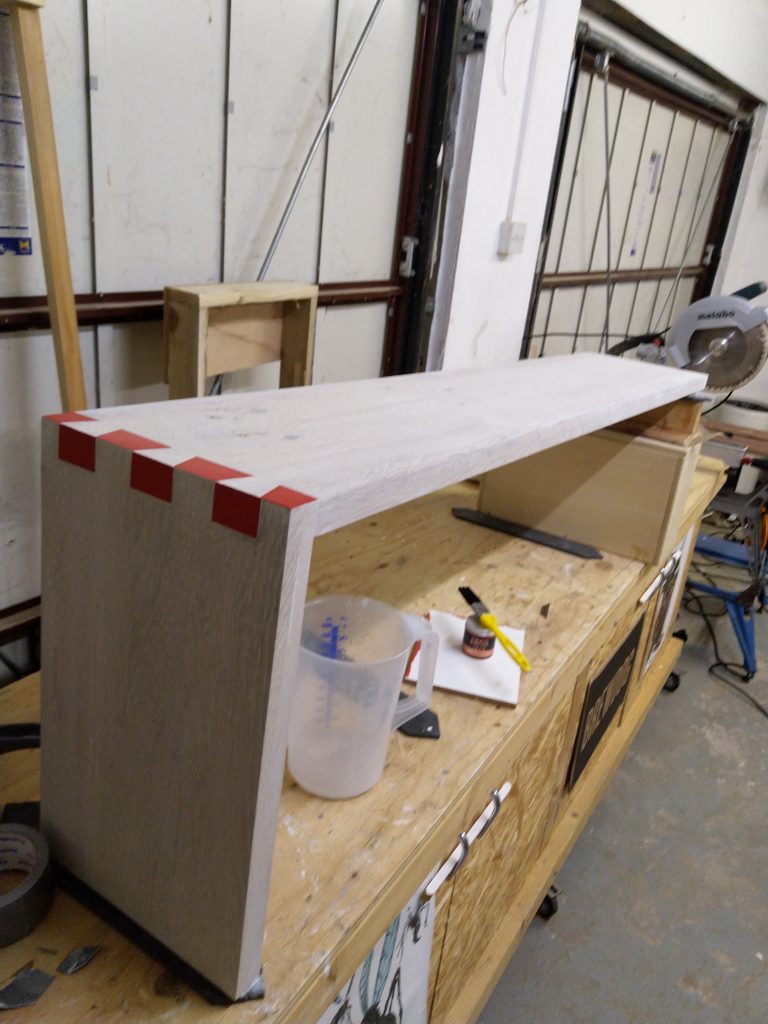
When the leg returned from the shop, the only thing to do was to attach it to the wooden part. I used metal threaded inserts to create 4 strong and durable points to bolt the leg onto. The floating effect of the red end grain above the leg turned out better than I expected.
Looking back at building this bench I’m quite happy how I was able to improvise step after step. Usually this is a recipe for disaster, but in this case I managed to get to a result I’m very happy with.
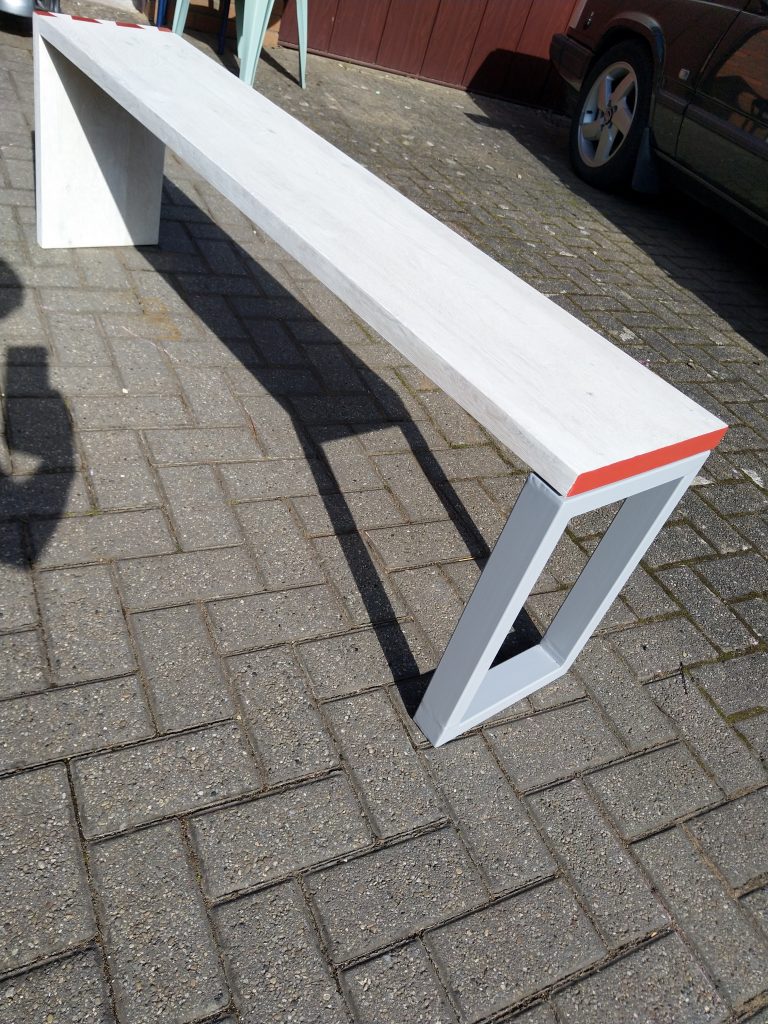
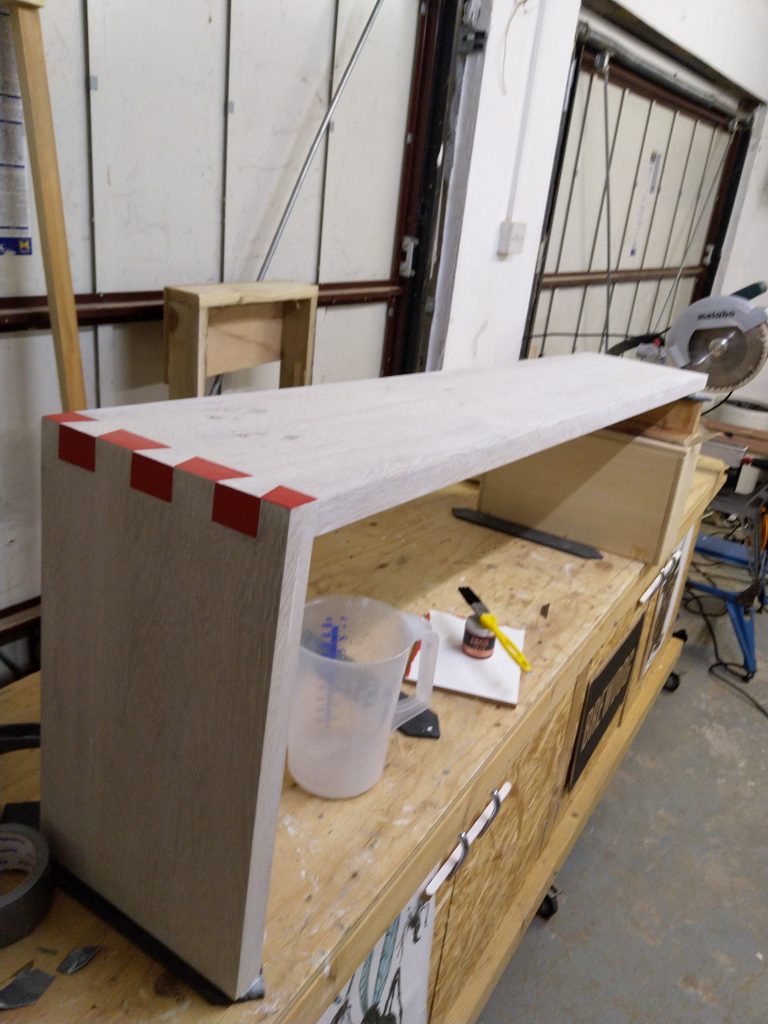
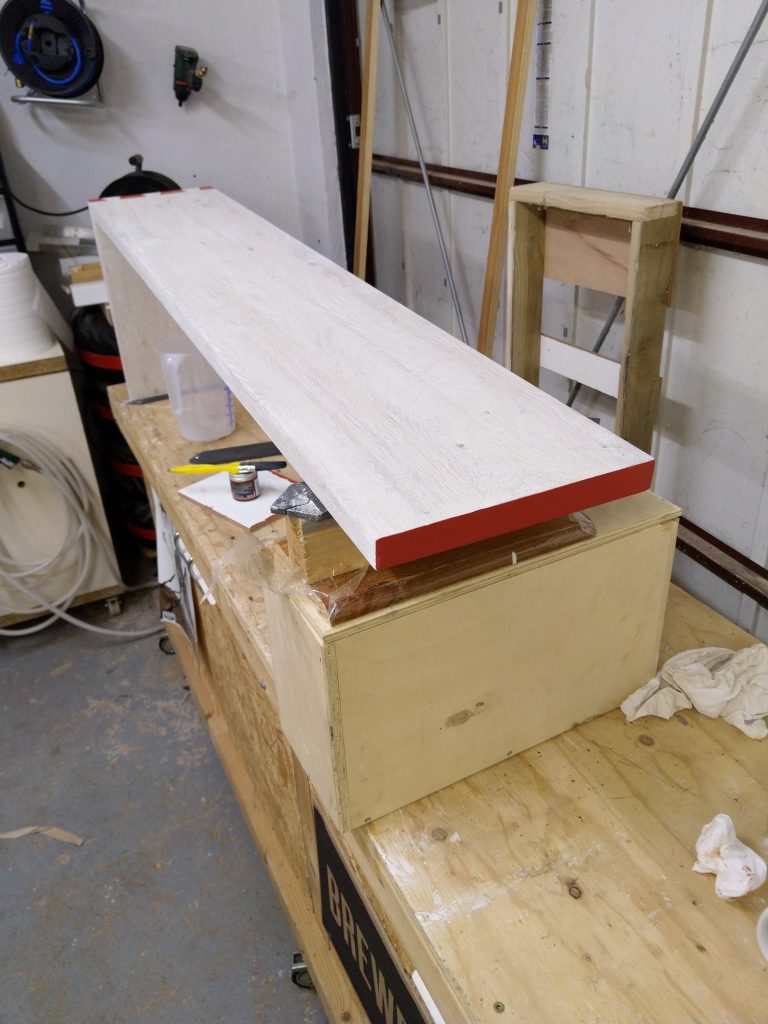
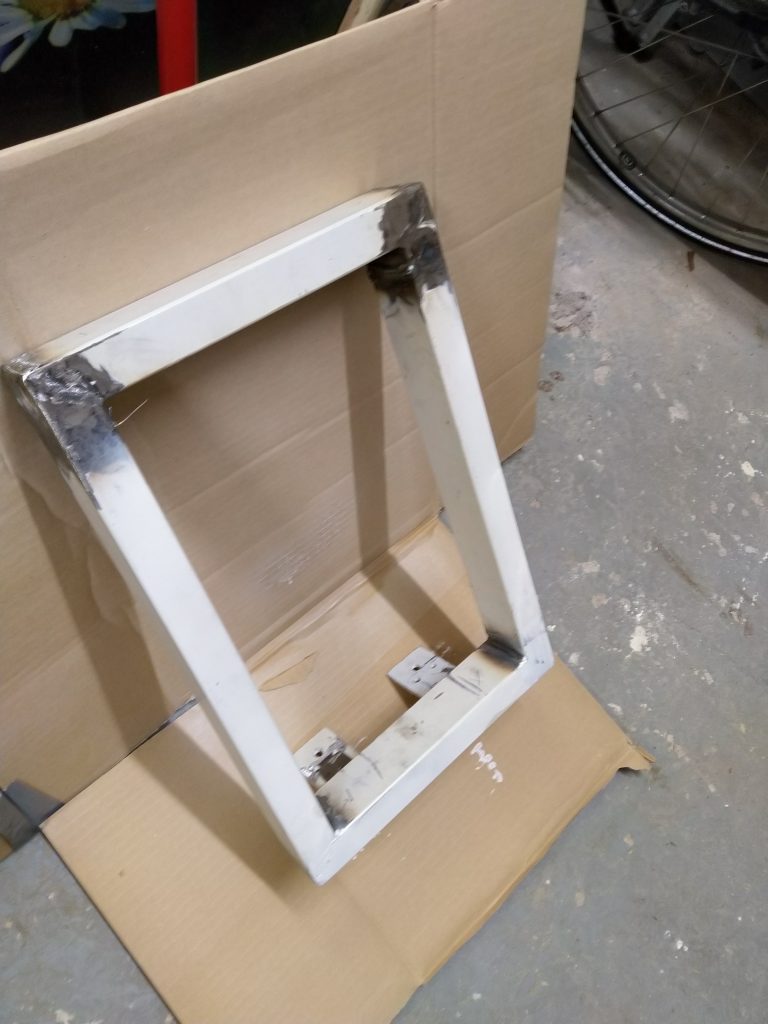
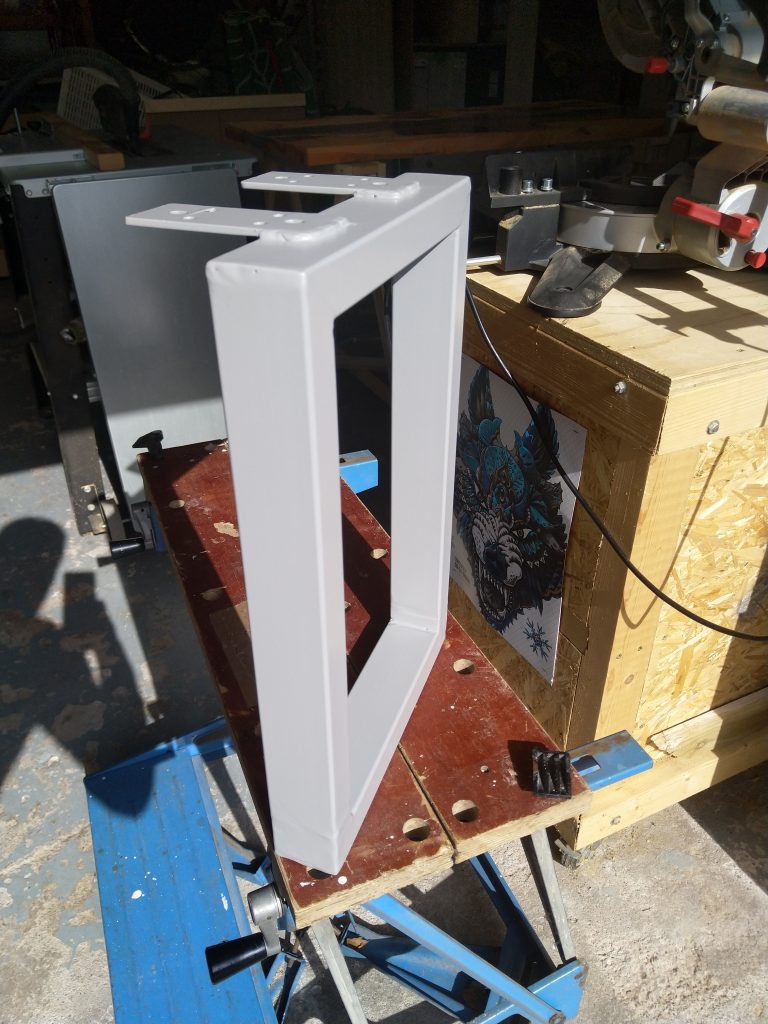
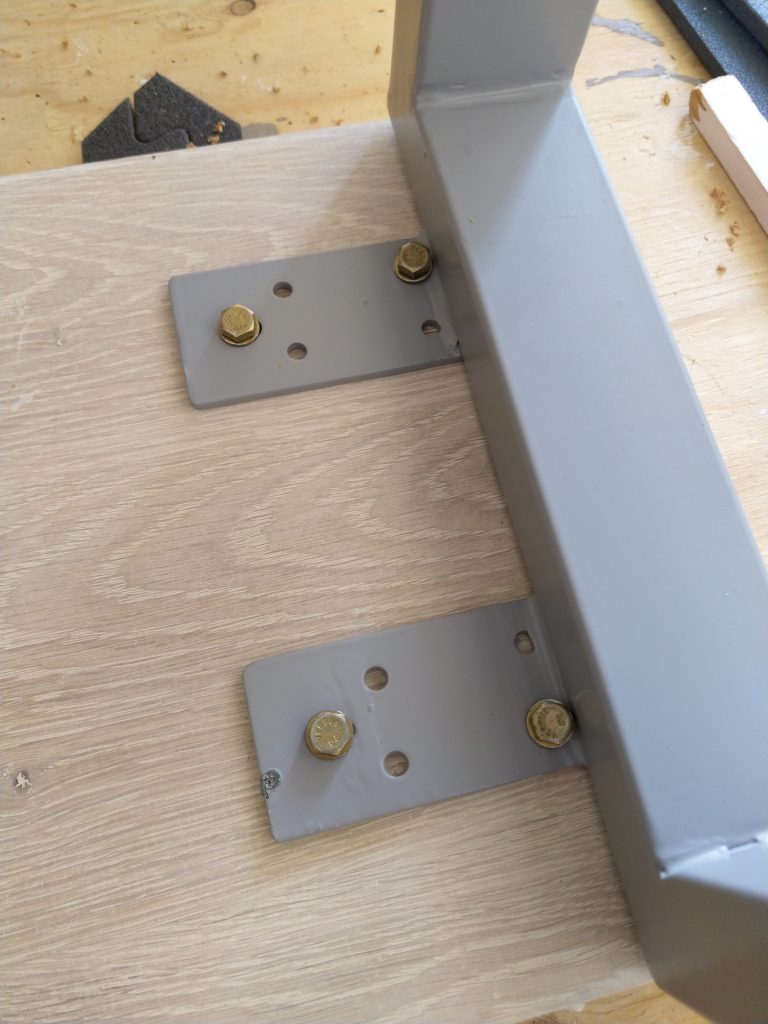
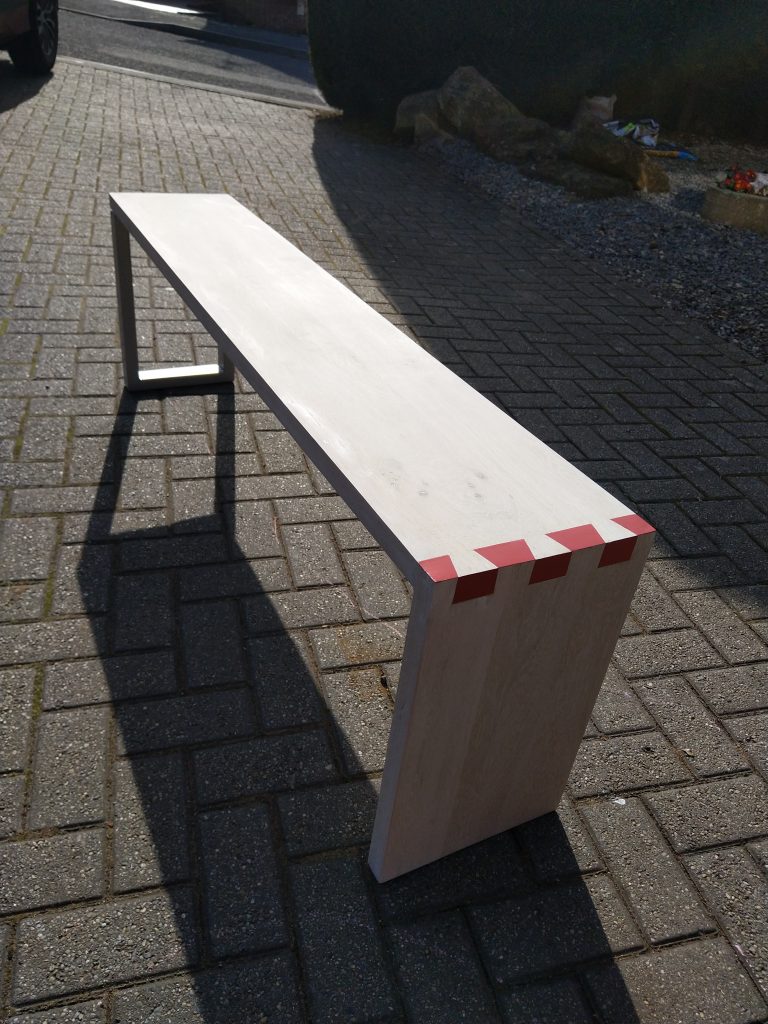
Recent Comments